“About every five feet, there was a body….it was the Hunger Games.” – Life in America’s National Parks, 2022
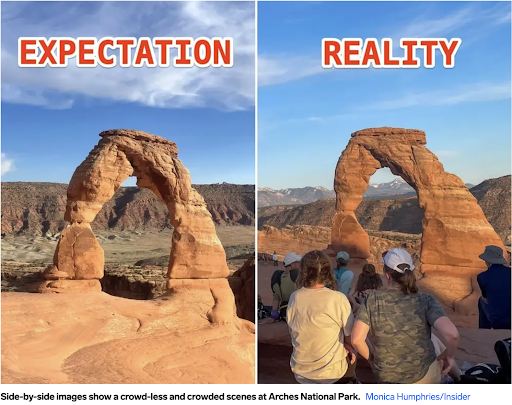
Three out of every four Americans feel an “emotional or spiritual uplift” from spending time in natural areas, and 85 percent of Americans say it is important to be able to access them. From our study:
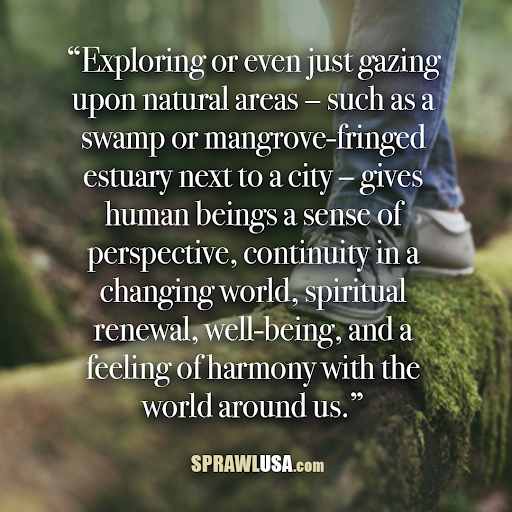
As America’s population grows, and urban areas expand across our nation, we are losing our ability to enjoy nature’s beauty and serenity. Unless America can achieve a stable sustainable population, the trampling of our remaining open spaces will worsen. The Census Bureau projects the U.S. population will grow by over 70 million people by the Year 2060, with roughly 90 percent of that growth resulting from immigration.
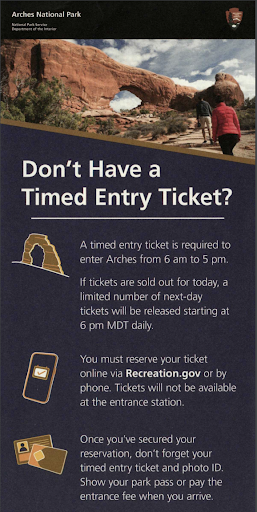
|
This summer, millions of Americans are experiencing just how challenging it can be to access some of America’s most precious and beloved natural spaces. You now have to book a reservation for seven of America’s most popular national parks. And once you gain entry, it is difficult to find a quiet place to commune with nature. |
“Park horror stories have grown common in recent years,” laments Professor Michael Childers. “They include miles-long traffic jams in Yellowstone, three-hour waits to enter Yosemite, trails littered with trash and confrontations between tourists and wildlife.”

The national park system has grown significantly over its 150-year history, but the demand for access has grown faster.
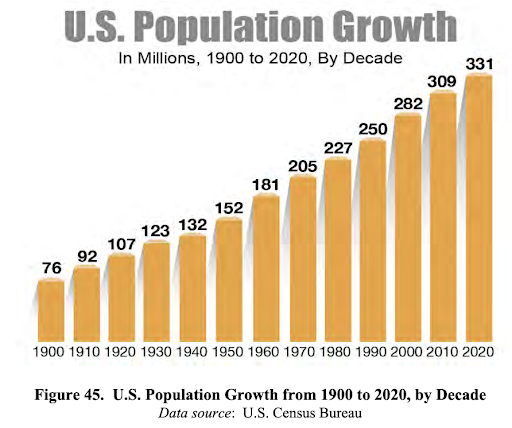
In addition to the millions of additional Americans seeking to experience the exquisite wonder of these places, foreign tourism has spiked as people from around the world come to visit wild places that they can’t find at home. Unlike European countries, for instance, America could still meet the ambitious goals of the “Nature Needs Half” movement (13.9 percent of the U.S. is currently protected). Preserving America’s open space would redound to the benefit of people around the world.
With so many people crowding into national parks, the experience can feel more like you’re in a mega zoo than in the wild (although the natives don’t see it that way).
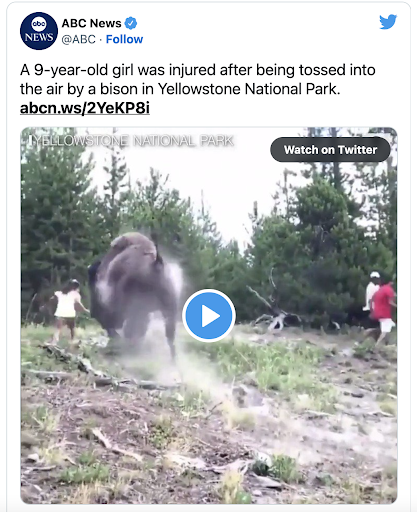
A lifestyle reporter visited Arches National Park in Utah before the peak season, and documented the crowds. Despite a reservation and a “timed-entry ticket,” she sat behind a long line of idling cars waiting to get in.
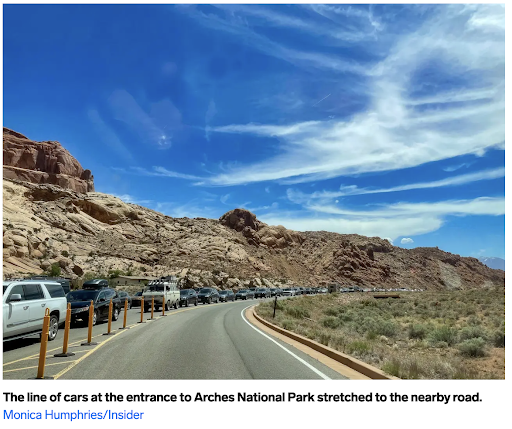
Nobody goes to a National Park to fight over parking spots. But the competition for space doesn’t end there. Does this travelogue describe a recent experience of your own?
I had to drive around the parking lot multiple times, waiting for a spot to open. It reminded me of my mom at the mall many years ago during Christmastime…the crowds put me off and finding a place to park so I could explore made it hard. Once parked, the trails were filled with too many people — about every five feet; there was a body….
“…Everyone seemed to be competing for a picture, a better position on the trail, a parking spot, and the line at the bathroom. As a solo person, the hoards nearly trampled me. There was little trail etiquette, camaraderie, and shared happiness in the park’s glory. It was the Hunger Games.”
If the idea of booking a timed-entry reservation to experience the splendor of America’s wild spaces seems like something out of a dystopian science fiction fantasy, the future is here.
“It can be a challenge for people who planned a trip and had their hearts set on being somewhere, and not being able to get in because a place is full at eight o’clock in the morning,” says NPS Chief of Communications Jenny Anzelmo-Sarles.
We’re a far cry from blasting the last remaining wild spaces into an interstellar greenhouse Silent Running style, but if you don’t like the idea of restricting public access to mitigate the overcrowding…too bad, they say. “More like this are coming.”
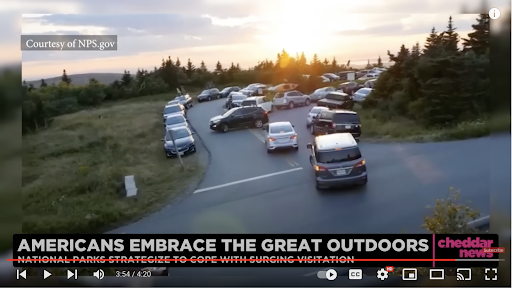
Or, Congress could moderate the historically-high levels of immigration, to give the United States population a chance to stabilize, and to give our wild spaces a little elbow room.
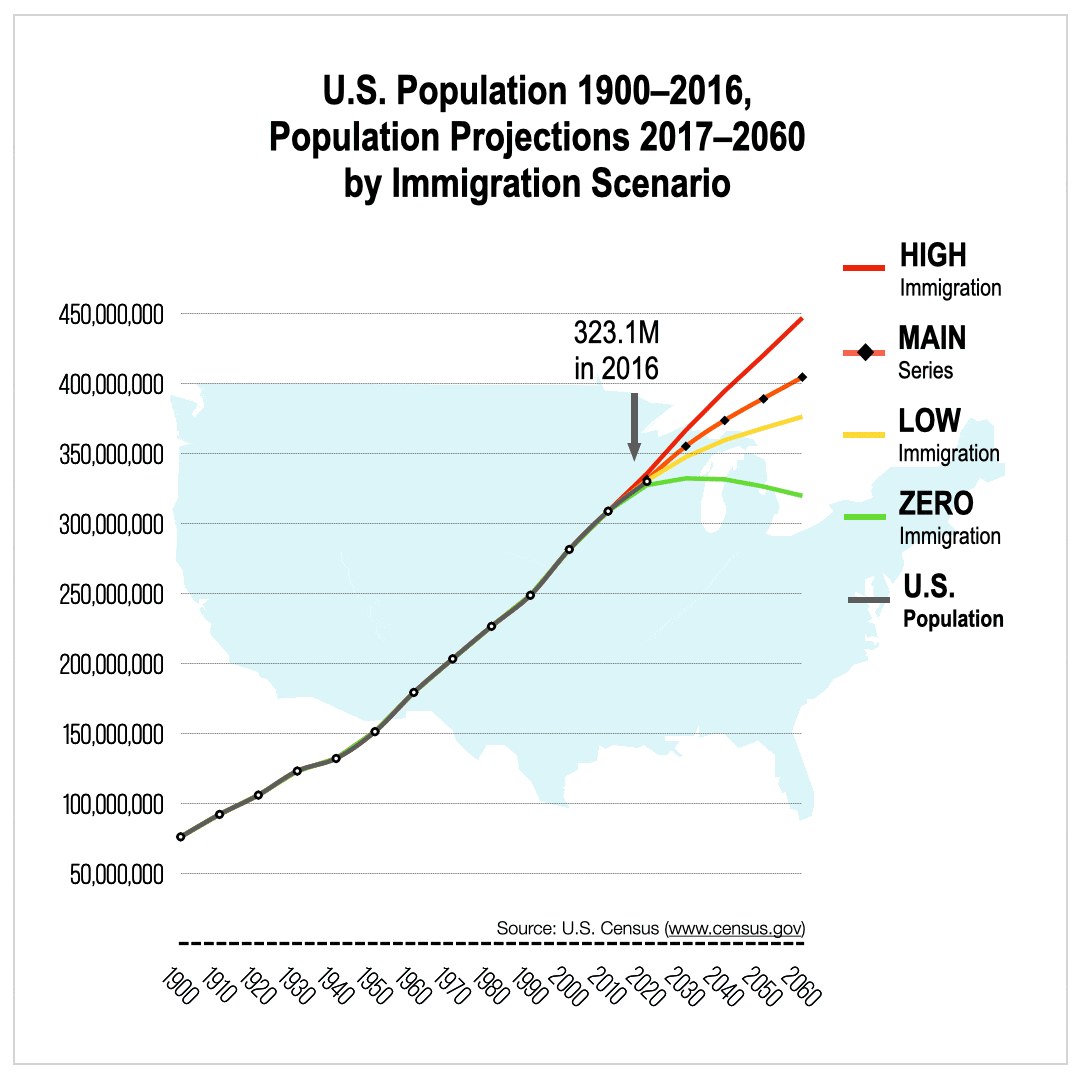
QUICK HITS:
JEREMY BECK is a V.P., Deputy Director for NumbersUSA
Take Action
Your voice counts! Let your Member of Congress know where you stand on immigration issues through the Action Board. Not a NumbersUSA member? Sign up here to get started.
Donate Today!
NumbersUSA is a non-profit, non-partisan organization that relies on your donations to works toward sensible immigration policies. NumbersUSA Education & Research Foundation is recognized by America's Best Charities as one of the top 3% of well-run charities.
Immigration Grade Cards
NumbersUSA provides the only comprehensive immigration grade cards. See how your member of Congress’ rates and find grades going back to the 104th Congress (1995-97).